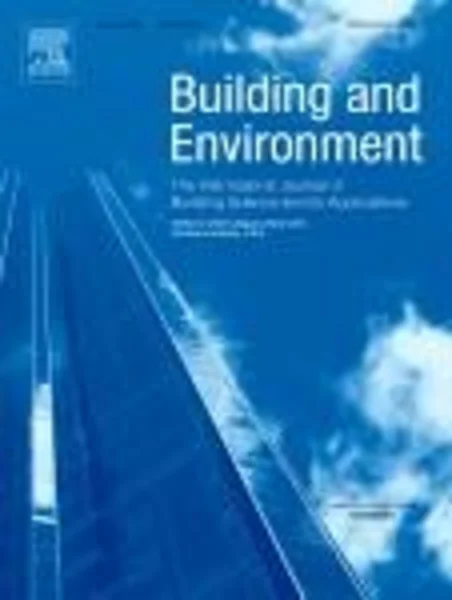-
cfd simulation of airborne pathogen transport due to human activities
جزئیات بیشتر مقاله- تاریخ ارائه: 1390/01/01
- تاریخ انتشار در تی پی بین: 1390/01/01
- تعداد بازدید: 580
- تعداد پرسش و پاسخ ها: 0
- شماره تماس دبیرخانه رویداد: -
computational fluid dynamics (cfd) is an increasingly popular tool for studying the impact of design interventions on the transport of infectious microorganisms. while much of the focus is on respiratory infections, there is substantial evidence that certain pathogens, such as those which colonise the skin, can be released into, and transported through the air through routine activities. in these situations the bacteria is released over a volume of space, with different intensities and locations varying in time rather than being released at a single point. this paper considers the application of cfd modelling to the evaluation of risk from this type of bioaerosol generation. an experimental validation study provides a direct comparison between cfd simulations and bioaerosol distribution, showing that passive scalar and particle tracking approaches are both appropriate for small particle bioaerosols. the study introduces a zonal source, which aims to represent the time averaged release of bacteria from an activity within a zone around the entire location the release takes place. this approach is shown to perform well when validated numerically though comparison with the time averaged dispersion patterns from a transient source. however, the ability of a point source to represent such dispersion is dependent on airflow regime. the applicability of the model is demonstrated using a simulation of an isolation room representing the release of bacteria from bedmaking.
مقالات جدیدترین رویدادها
-
استفاده از تحلیل اهمیت-عملکرد در ارائه الگوی مدیریت خلاقیت سازمانی و ارائه راهکار جهت بهبود
-
بررسی تاثیر ارزش وجوه نقد مازاد بر ساختار سرمایه شرکت های پذیرفته شده در بورس اوراق بهادار تهران
-
بررسی تأثیر سطح افشای ریسک بر قرارداد بدهی شرکت های پذیرفته شده در بورس اوراق بهادار تهران
-
بررسی تأثیر رتبه بندی اعتباری مبتنی بر مدل امتیاز بازار نوظهور بر نقد شوندگی سهام با تأکید بر خصوصی سازی شرکت ها
-
تأثیر آمیخته بازاریابی پوشاک ایرانی بر تصویر ذهنی مشتری پوشاک ایرانی (هاکوپیان)
-
بررسی میزان تاثیر پارامترهای مختلف فیزیکی و محیطی موثر در میزان شکست قطعات آرمور بکارگرفته شده جهت حفاظت هسته موج شکن
-
بررسی اثرات و پیامدهای انتقال آب بین حوضه ای در ایران و جهان
-
باز نمایش باغ در فرش ایرانی از منظر هندسه فراکتال
-
بررسی آزمایشگاهی فروریزش پوسته های استوانه ای دوجداره برنجی تحت بارگذاری مایل
-
synthesis of nanostructured perovskite powders via simple carbonate co-precipitation
مقالات جدیدترین ژورنال ها
-
مدیریت و بررسی افسردگی دانش آموزان دختر مقطع متوسطه دوم در دروان کرونا در شهرستان دزفول
-
مدیریت و بررسی خرد سیاسی در اندیشه ی فردوسی در ادب ایران
-
واکاوی و مدیریت توصیفی قلمدان(جاکلیدی)ضریح در موزه آستان قدس رضوی
-
بررسی تاثیر خلاقیت، دانش و انگیزه کارکنان بر پیشنهادات نوآورانه کارکنان ( مورد مطالعه: هتل های 3 و 4 ستاره استان کرمان)
-
بررسی تاثیر کیفیت سیستم های اطلاعاتی بر تصمیم گیری موفق در شرکتهای تولیدی استان اصفهان (مورد مطالعه: مدیران شرکتهای تولیدی استان اصفهان)
-
ارتباط اخلاق حرفه ای با مسئولیت پذیری اجتماعی و عملکرد سازمانی با نقش میانجی گری عملکرد محیطی در اداره کل اموراقتصادی و دارایی آذربایجان شرقی
-
بررسی نگارگری مکتب شیراز با تاکید بر کتاب خاوران نامه
-
حضور داعش در عراق و تأثیر آن بر امنیت ایران از نگاه شهروندان مهران
-
تبیین نقش عدالت سازمانی و تاثیر آن بر تعهد افراد در سازمان ( مورد مطالعه : شهرداری منطقه 5 تهران )
-
بررسی تأثیر جهت گیری هدف، خودکارآمدی و پیچیدگی کار بر عملکرد قضاوتی حسابرسان




سوال خود را در مورد این مقاله مطرح نمایید :